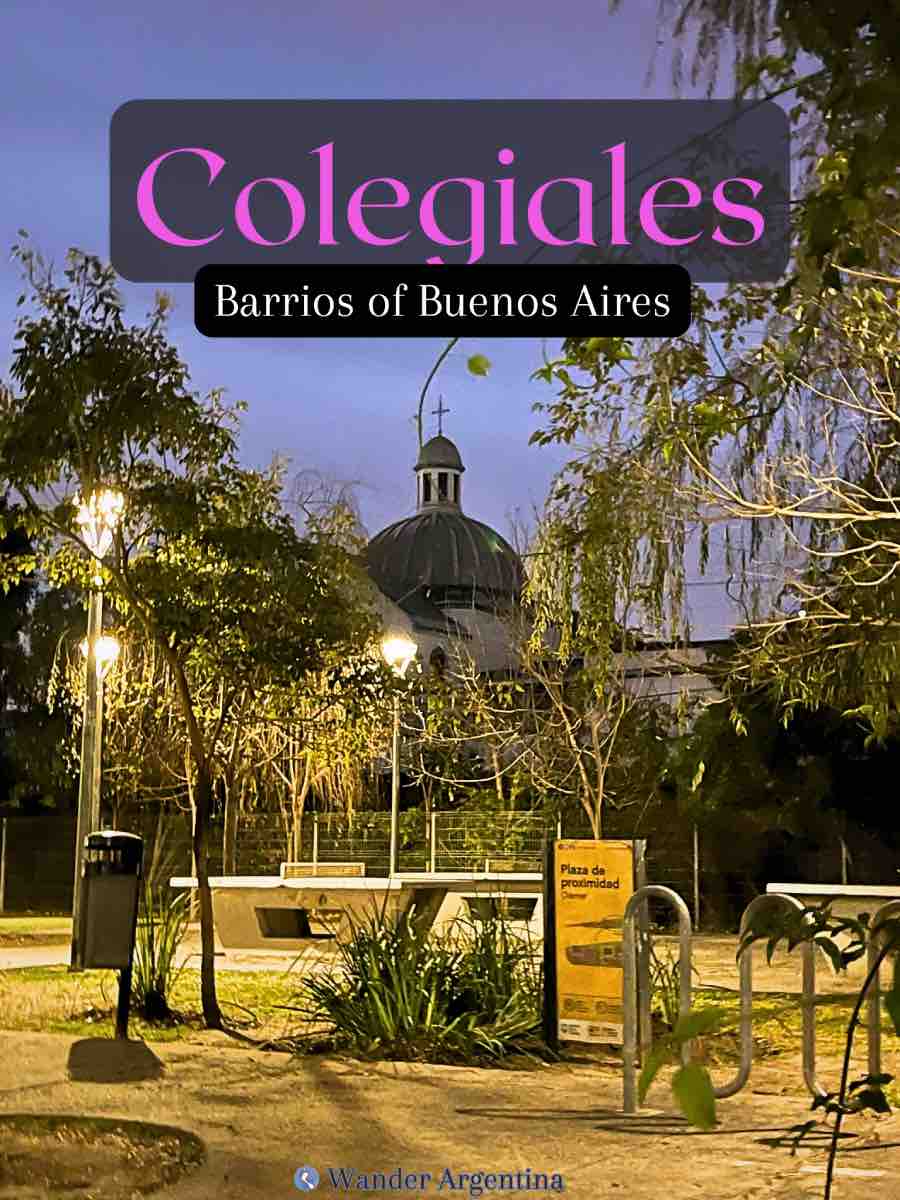Colegiales is a Buenos Aires residential neighborhood with tree-lined cobblestone streets, eclectic cafes and a low-key community vibe.
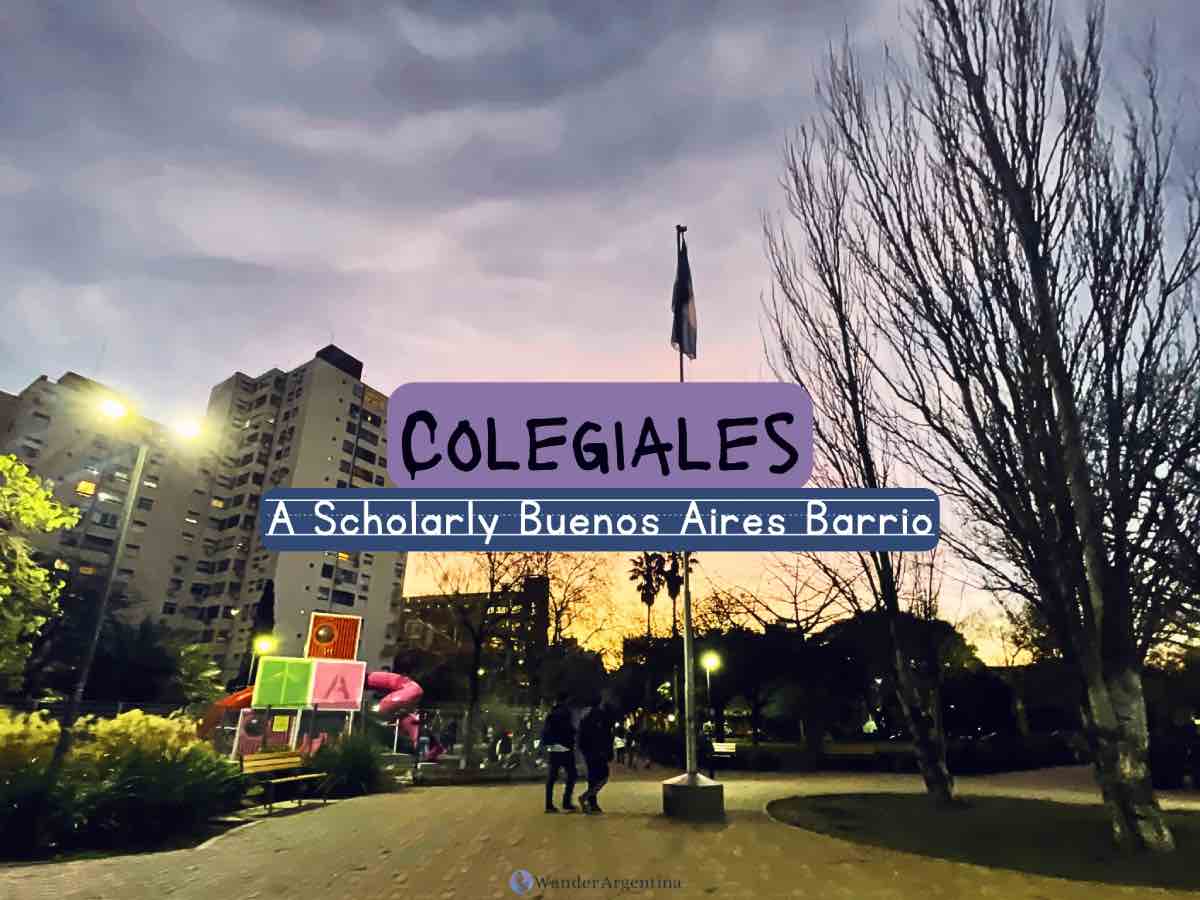
Often overshadowed by its larger neighbors, it’s ideal for daytime exploration to check out its funky flea market and chilled-out plazas and parks.
From Jesuit Farm to Residential Hub
Colegiales roots predate the country, reaching back to the 1700s.
Together with the adjoining Chacarita neighborhood, this area was part of a large Jesuit estate called ‘La Chacarita de Colegiales‘ that served as a summer camp for Buenos Aires’ school kids.
After the Jesuits were expelled from Spanish territories in 1767, the land was secularized and parceled out for agricultural use.
‘Colegiales’ translates to ‘Students’ or ‘Scholars,’ so it’s fitting that ‘the one-time ‘little farm’ remains one of the most education-oriented Buenos Aires barrios.
As school bells chime across the neighborhood, the sidewalks of Colegiales fill up with the giggles of students clad in their distinctive Catholic school uniforms, spilling out into the afternoon sun.
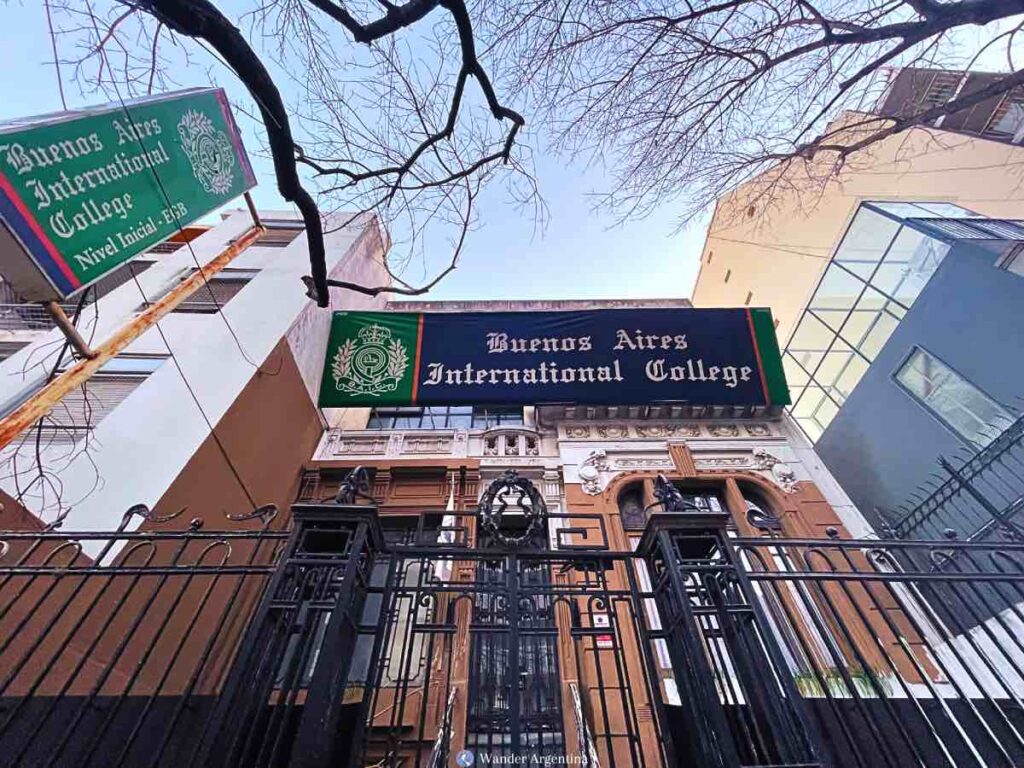
Students pour over books on public transportation, in cafes and in parks, proving that there’s a reason Buenos Aires is the ‘City of Books’ and Argentina enjoys the highest literacy rate in Latin America.
Colegiales official birthdate of September 21, 1865, coincides with the arrival of spring and the celebration of Argentina’s Student Day.
The Railway & 20th Century Growth
In 1898 the British-owned Buenos Aires railway company built Colegiales station, linking the then-rural area to downtown’s Retiro station.
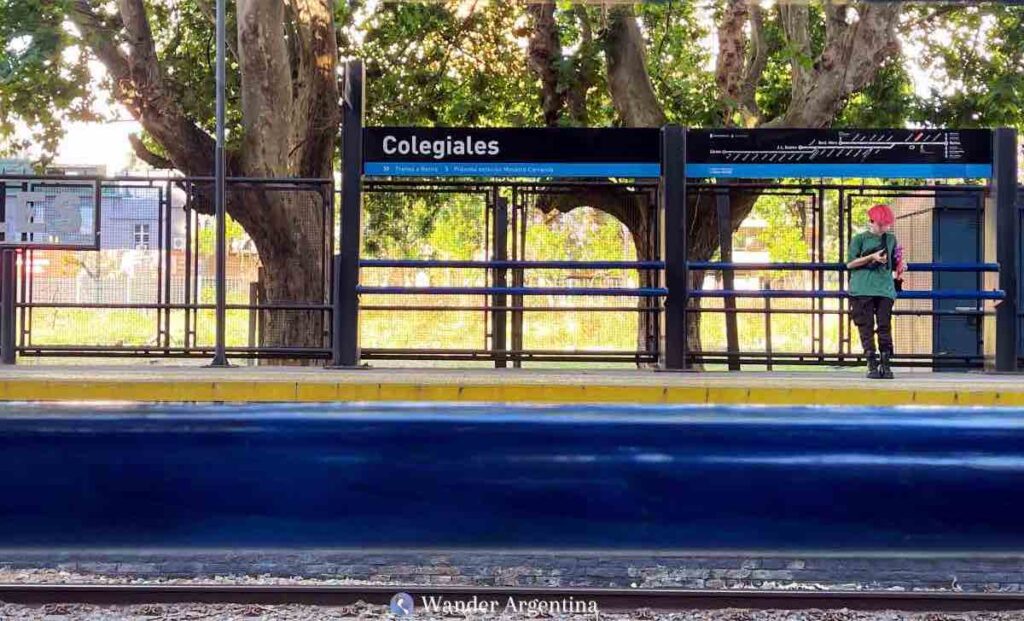
As Buenos Aires expanded its electric power grid here in the 1920s, immigrants, mostly from Italy and Spain, moved in to work in area factories.
Many of the century-old single-family dwellings, low-rise Italianate buildings with arched windows, and decorative cornices were built in that era.
In the 1930s a slum area known as Villa 30 began to sprout up around the railroad tracks that ran through the heart of Colegiales..
The informal settlement was part of a broader trend of villa miserías (literally, ‘misery villages’) that sprouted up as people moved to Buenos Aires from the provinces, and continued when Juan Perón incentivized urban migration in the 1940s.
It wasn’t until Argentina’s 1978 World Cup, that Argentina’s last military dictatorship decided on an ‘eradication plan’ for the city’s slums (link in Spanish).
Colegiales Villa 30, only a few kilometers from Monumental Stadium, where the tournament was being played, gained national attention as the government forcefully evicted people and demolished their homes on live TV.
Today, the one-time slum area contains a huge, non-esthetic but functional housing complex, a satellite campus for the Catholic University and a park area.
A few squatters remain in Colegiales, but its shantytown days are long gone.
Colegiales Culture & Community Vibe
Colegiales still maintains its residential character and its lovely tree canopy means parrots are almost as numerous as pigeons.
One study (link in Spanish) conducted by the National University of La Plata ranked it as the Buenos Aires neighborhood with the highest quality of living in the city.
With six plazas in total and parks with playgrounds, ping pong tables and exercise equipment, there is ample opportunity to get fresh air and socialize.
Sidewalk socializing is directed by the neighborhood’s many dogs who engage in elaborate olfactory friendship rituals, obliging their humans to get to know each other as well.
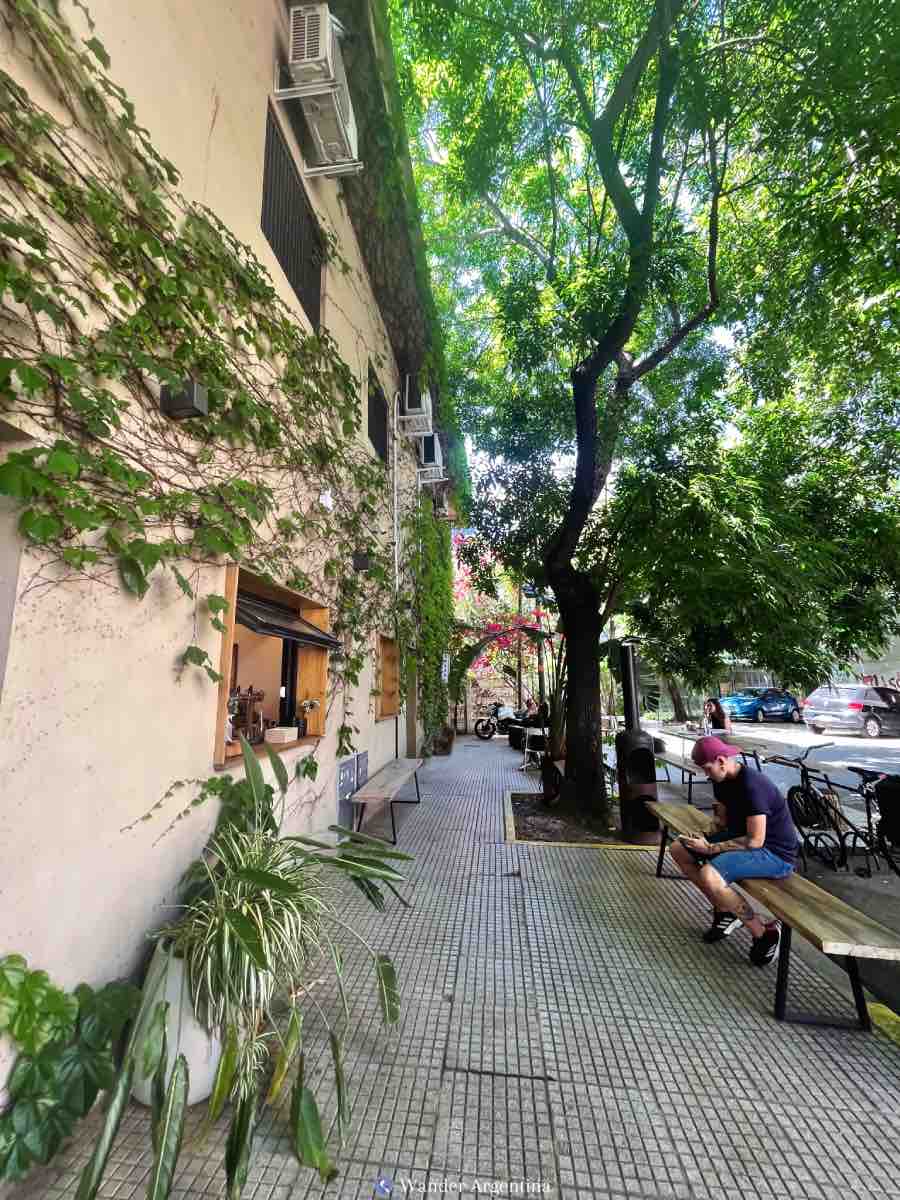
The public community sports complex here has an outdoor swimming pool, basketball and tennis courts, and soccer fields lit with solar power until they close at 9:00 p.m.
See our article about joining a sports team in Buenos Aires to find a tennis opponent or a team.
Community Activists Fighting to Preserve Green Space
A key reason Colegiales is so lovely is that the mere sighting of a cement mixer, street seller, or encampment prompts longtime residents to investigate and call city leaders to find out what’s going on.
Neighborhood groups such as Movimiento Comunero fight against the sale of public land, large-scale development, and impromptu sidewalk hawking (like you’d find in neighborhoods like Once and Abasto) and successfully stopped the construction of a shopping center in Plaza Clemente.
A 6.7-hectare (16.56 acres) plot of nationally owned public land around the railroad tracks is a prime area of contention.
At a community meeting, sociologist and leader of Movimiento Comunero, Carlos Wilkenson, pointed out that a proposed new development on empty lots here would leave residents with a mere 0.7 m² (7.5 sq ft) of green space per inhabitant.
Rabble-rousing residents are also urging the city to reopen the Ciudad de La Paz bridge that connects Colegiales, Belgrano and Palermo.
Originally for tramway cars, the 1916 bridge converted for car traffic was closed for safety reasons in 2023.
Civic champions partook in the Argentine art of an ‘escrache‘ by placing a banner on the bridge broadcasting their displeasure with the delayed reopening while the city completes a structural study.
Neighborhood Attractions
Small compared to other Buenos Aires neighborhoods, (most notably, Palermo) Colegiales has an abundance of specialty coffee shops, parks, a great flea market for furniture, some interesting architecture and street art.
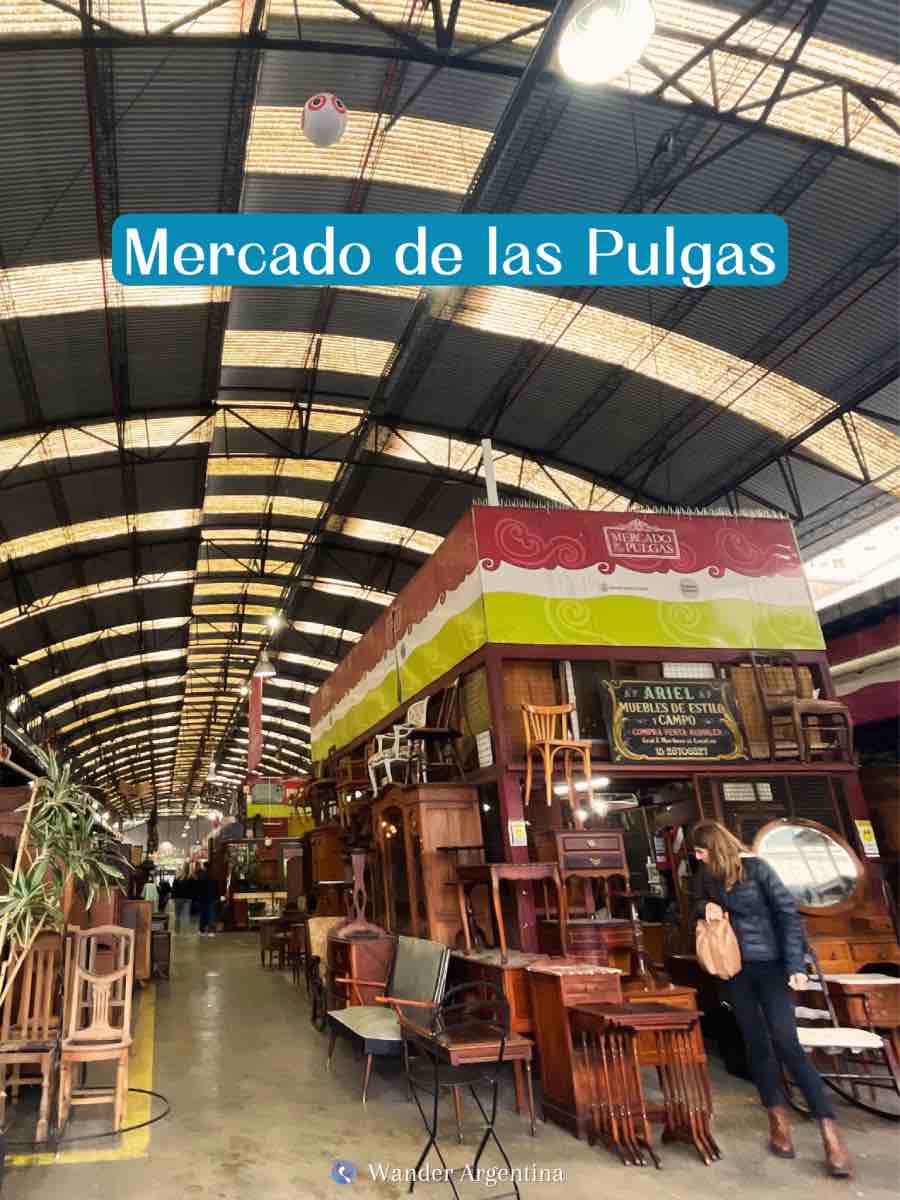
Mercado de las Pulgas (Dorrego Market)
Mercado de las Pulgas (Flea Market) at the intersection of Álvarez Thomas and Dorrego is a treasure trove for vintage furniture collectors.
Originally called Mercado de Dorrego, like San Telmo’s Market, it was once a produce market,
Repurposed in 1988, it is now Colegiales most popular attraction, with 170 antique stalls and a free art gallery upstairs.
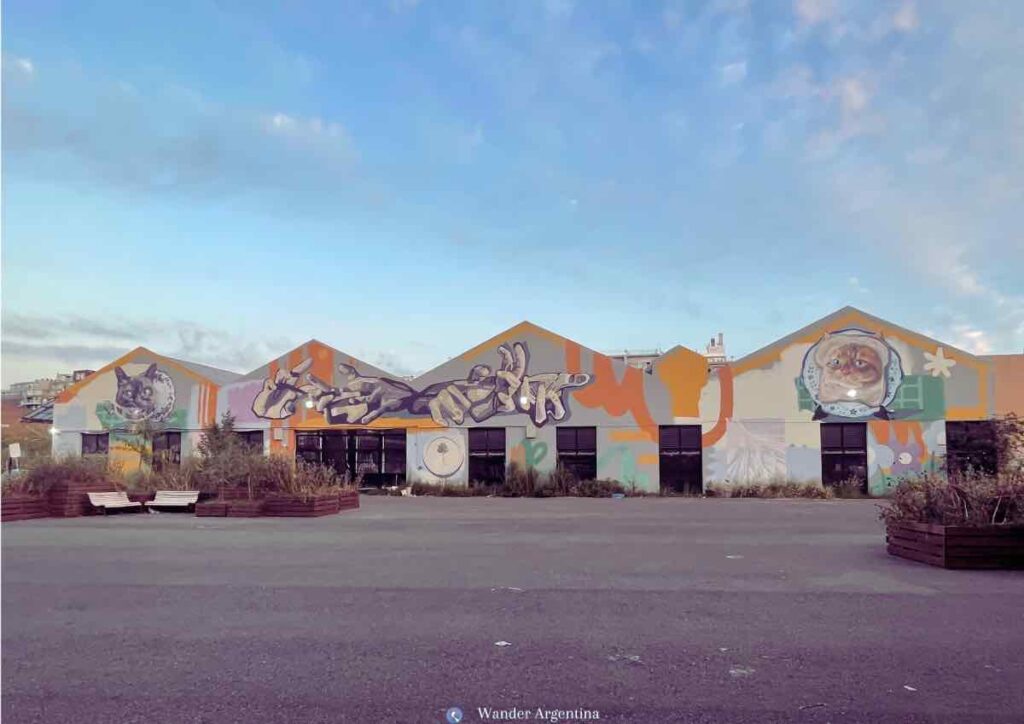
Plaza Mafalda
Named after the beloved character Malfalda, created by Argentine cartoonist Quino, Colegiales’ largest plaza, near the flea market, serves as a popular gathering spot for locals and visitors alike.
Transformed from a vacant lot in 2003, it’s perfect for dog walking and has a cool playground where it’s safe enough to let kids play after dark.
Street Art
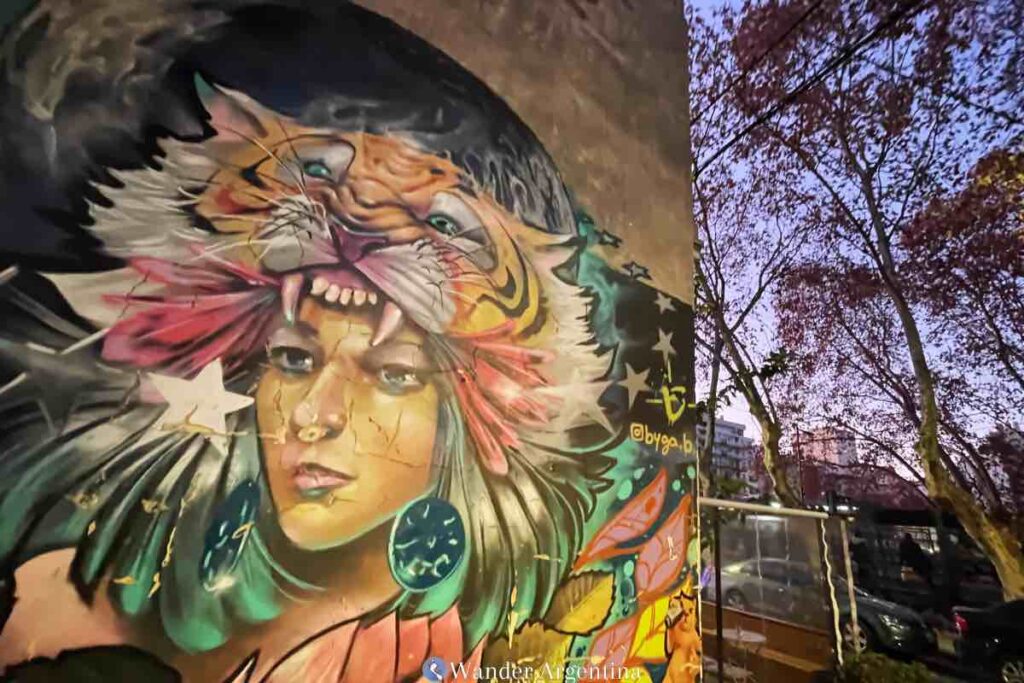
Buenos Aires has a lot of street art, and Colegiales has some nice pieces around Plaza Mafalda and the Dorrego flea market.
The four-story ‘Gaucho on Horseback’ mural by Jim Vision overlooks Plaza Cramer, where Colegiales’ Carnival troupe often practices on weekend afternoons.
Follow the music further to find a nearby mural of Lionel Messi and Diego Maradona holding up the beloved World Cup.
Half a block from Plaza Clemente you’ll find the Campos Jesses Street Art collective’s Frida Kahlo with 3-D accessories.
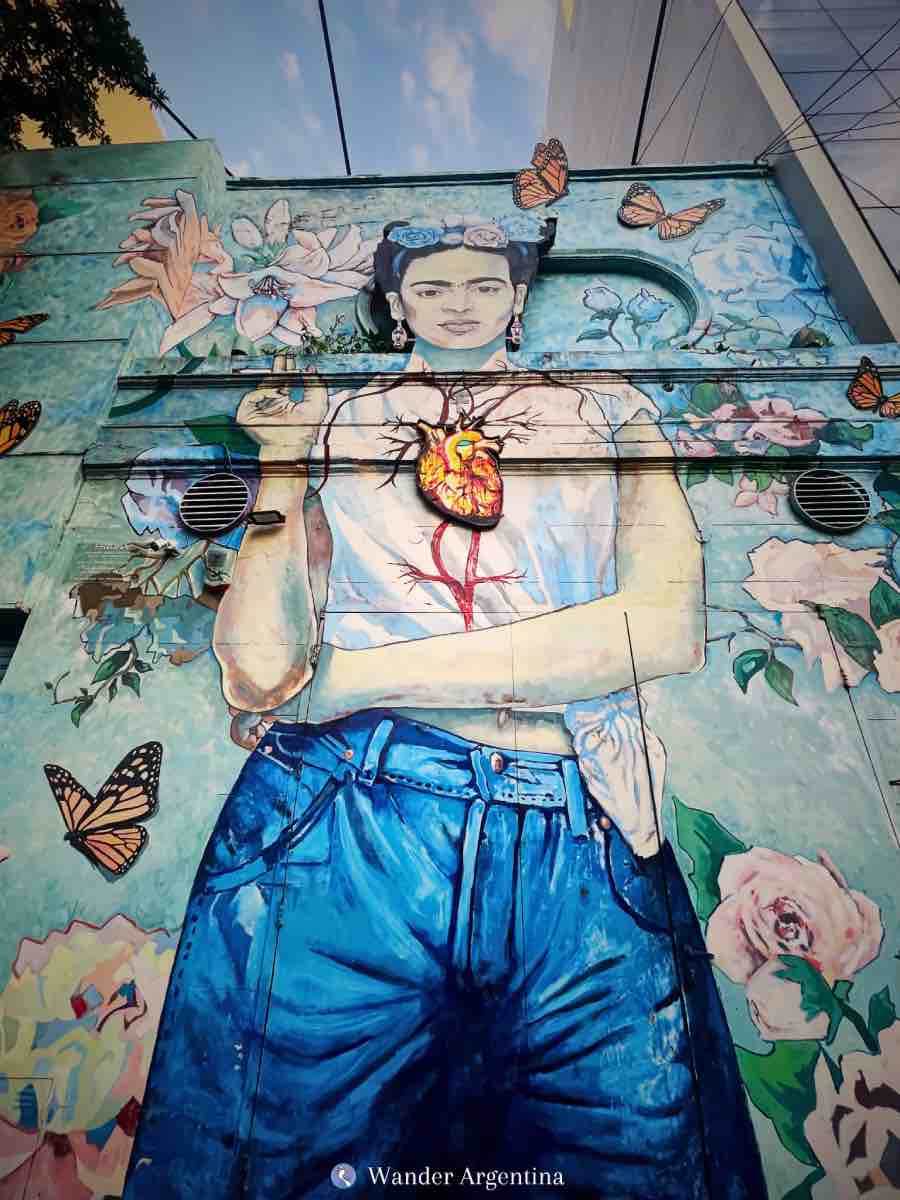
To see more street art around here take the city’s original Street Art Tour ➡
Architecture & Real Estate Development
Colegiales’ urban development began in earnest in the late 20th century, transforming it from a working-class area into a predominately upper-middle-class oasis.
The landscape is a mix of early 1900 two and three-story buildings, loft-style developments and utilitarian high-rise buildings that help to keep up with the demand for new housing.
High-Density Residential Retreat
With 52,500 residents squeezed into an area of 2.29 km² (0.8 mi²), the population density here is on par with Vancouver Canada’s West End neighborhood, one of the highest-density neighborhoods in North America.
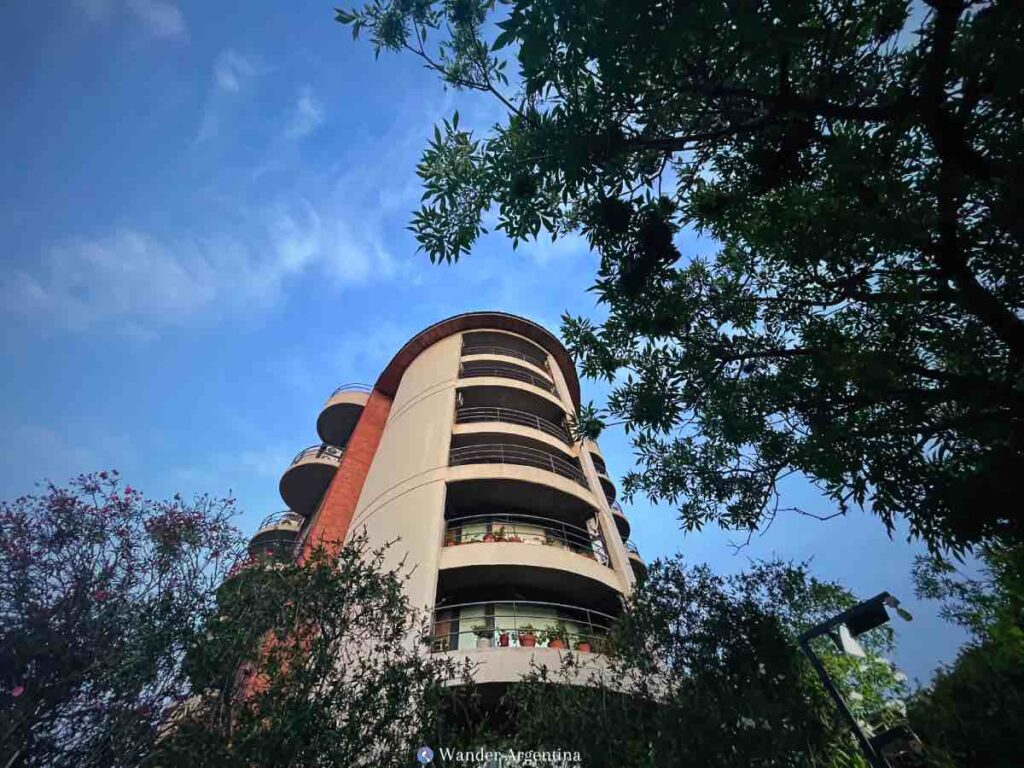
Although the population concentration isn’t as high as Almagro, the balance could be tipped by a chronic case of new developments, increasingly built up to the sidewalk line.
Classic Estates on Gorostiaga Passage
Colegiales most impressive street is steps away from busy Cabildo Avenue. ‘Gorostiaga Passage’ is a cobblestone lane with thirteen three-story homes that are a whimsical mix of Neocolonial, Tudor, and Beaux-Arts architecture.
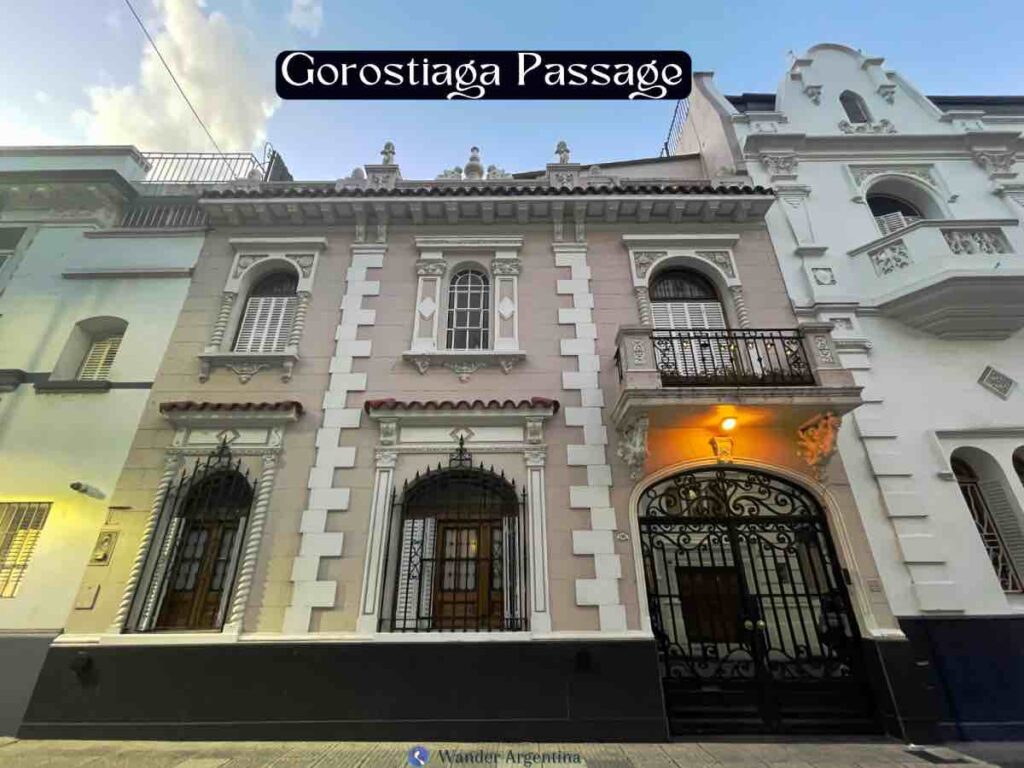
Right around the corner is another architectural relic of simpler times: General Paz Passage, at Zapata 552.
Constructed in 1925, the one-time public gallery occupies an entire block.
Inside 57 apartments surrounded by face a lush interior Andalusian patio.
Bridges connect each floor over the patio, allowing resident cats free reign.
The Southern Spain-styled building is basically an upscale version of the conventillos found in La Boca.
The century-old building’s structural integrity, fine details and more communal architectural design contrast with the austerity of Colegiales new steel and concrete boxes.
Today, this complex, highly sought after by Buenos Aires’ artists, stands fortified against intruders like a medieval castle, allowing only glimpses through its imposing gates
Silos Minetti: Luxury Lofts in an Old Flour Mill
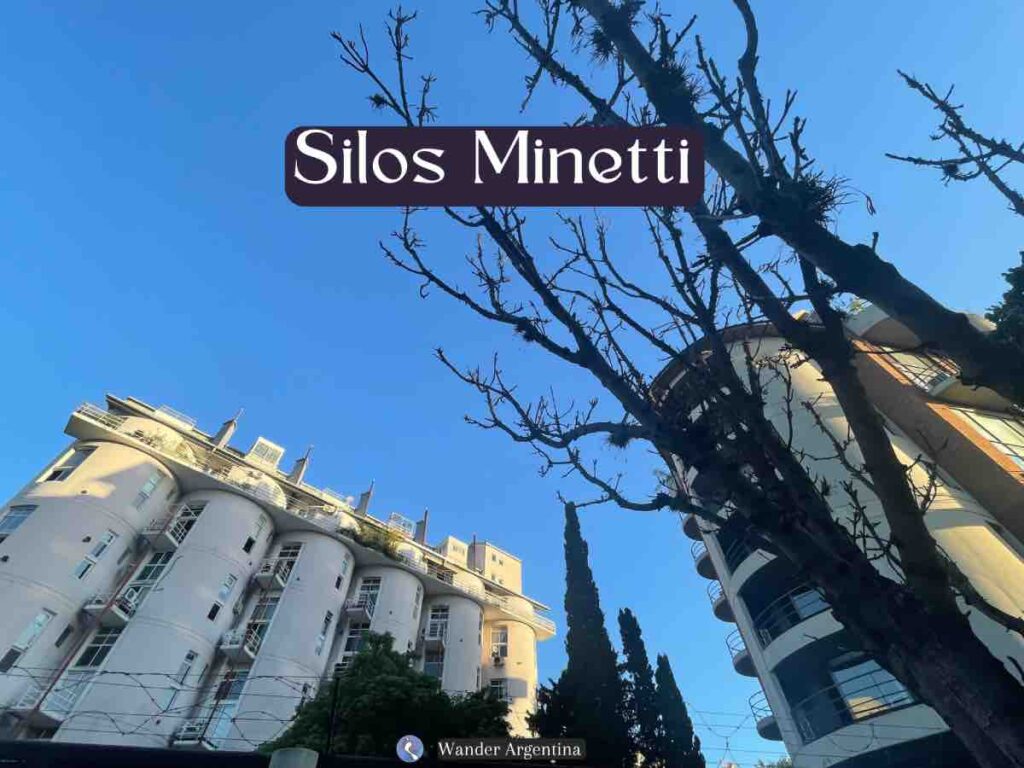
Silos Minetti, commercially named, Silos de Dorrego, is a fascinating property that has the distinction of being South America’s first loft redevelopment project.
The silos were part of the 1921 Minetti flour mill which sat empty for years after closing in the 1980s.
Debuting in 1993, the quirky luxury apartments have an interior garden, a heated pool, and paddle courts, fortified with an electric fence.
Rental prices start at US$1,000 a month with properties selling for a cool US$250,000.
Colegiales Sacred Grounds
Visitors can take a virtual spiritual world tour in Colegiales.
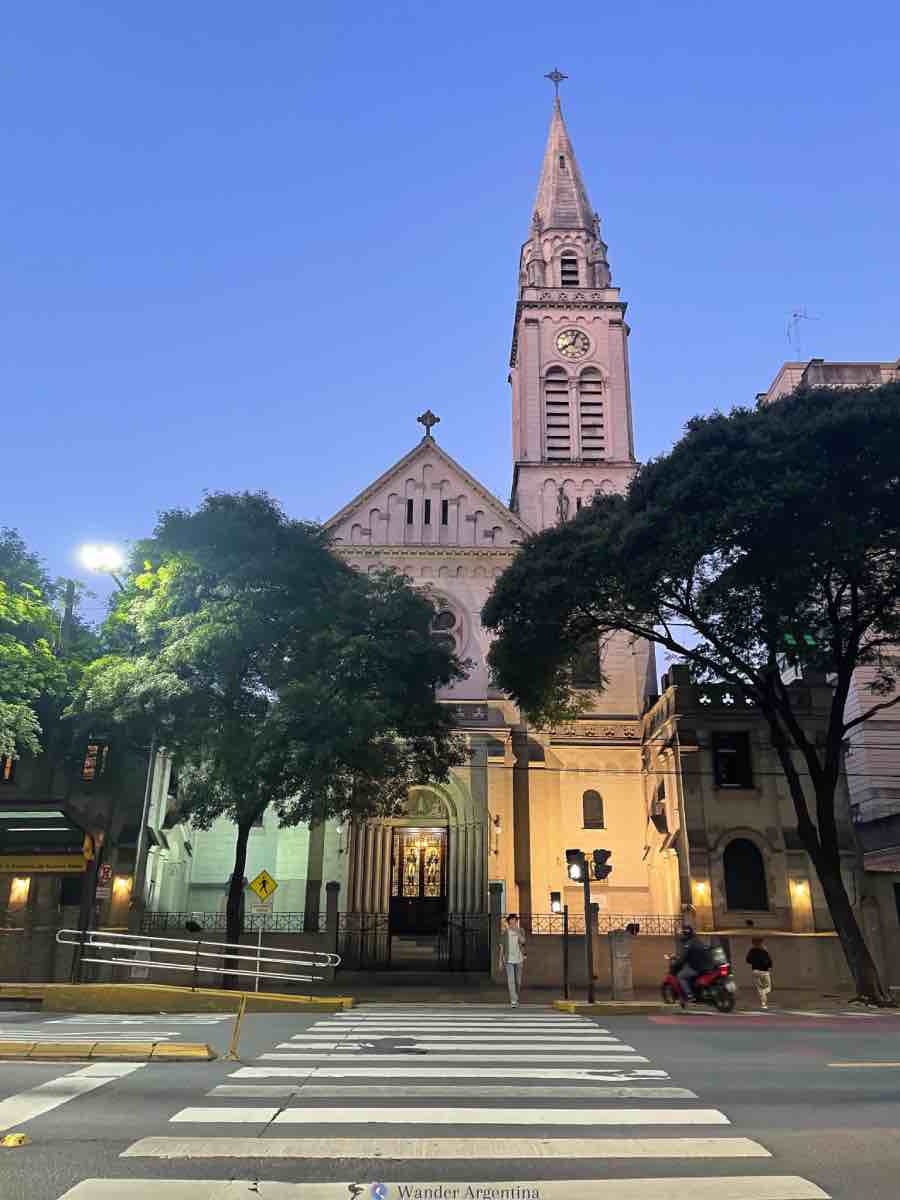
The mighty little neighborhood with Jesuit roots contains Catholic and other denomination churches, a couple of Synagogues, (one conservative and one orthodox), a Sufi lodge and a Hare Krishna temple.
Mystic Sufis, known for their whirling dervishes who spin for a spiritual high, occupy the neighborhood’s most ornate religious building.
Tekkia Sufi (The Sufi Tekké) is a gem of global craftsmanship, with a handcrafted door from Turkey, marble and fountains from India, an interior dome from China, and 11,365 tiles from Spain.
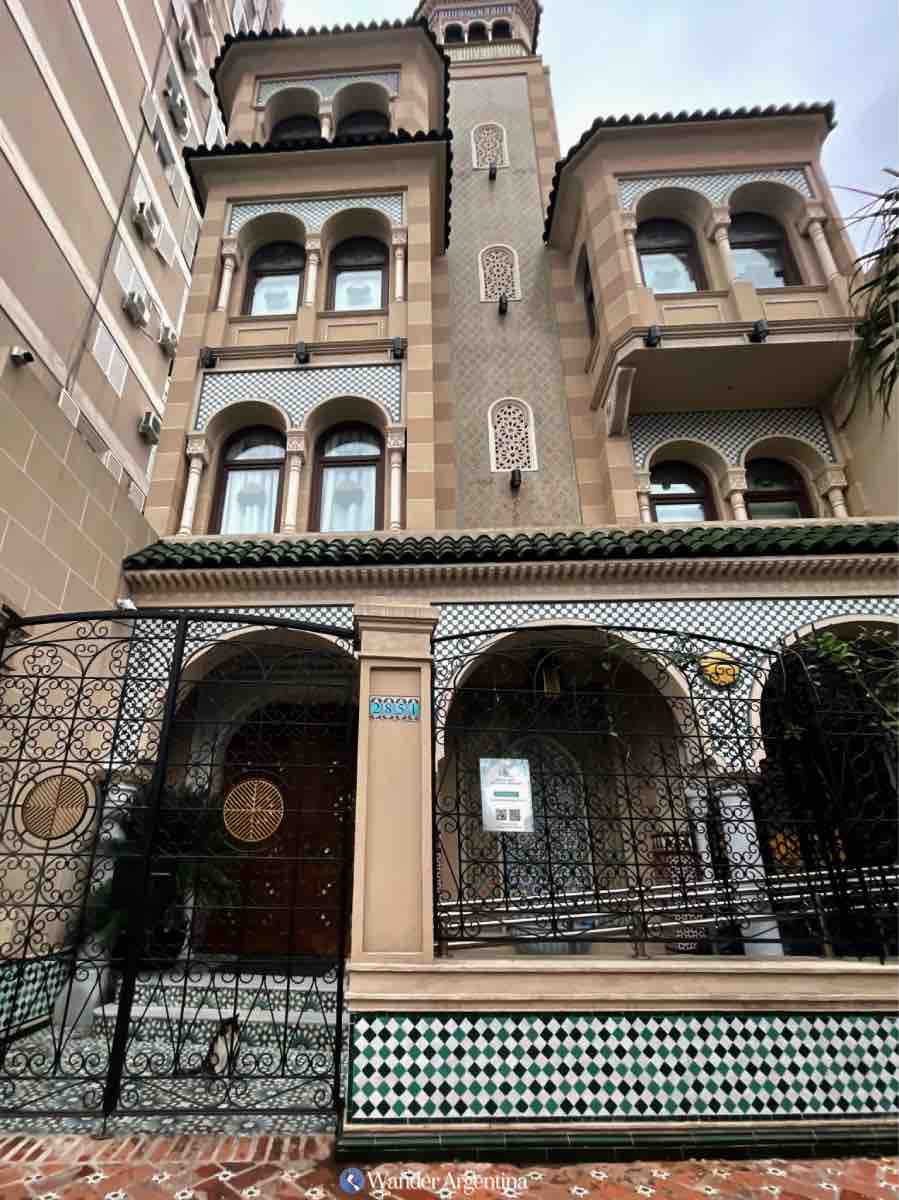
They offer tours, but there is a long waiting list.
Not to be overlooked, the Hare Krishnas have the largest ISKON temple in Argentina, right in Colegiales.
Following Bhakti yoga tradition, the worshipers of the little blue flute-playing God welcome the community for chanting and a donation-based vegetarian dinner every Sunday.
Transportation in Colegiales
Colegiales train station is this neighborhood’s historical lifeblood, with the Mitre-José León Suárez train screeching by regularly.
The modern trains are equipped with security cameras and air-conditioning. A train ride still costs a mere 5 cents (USD) headed downtown to Retiro, or to the northern suburbs the other direction.
You can even change trains on this line and get a ticket on a long-distance train to Cordóba, Tucumán, or Rosario.
The Buenos Aires Subway is also close by.
Line D runs near Colegiales, with the Olleros and Ministro Carranza stops right on its outskirts.
Cobblestone streets mean bicyclists sometimes roll by on the sidewalk, but major avenues such as Dorrego are paved and have bike lanes.
Between bike lanes, trains, subway and 24 bus lines crisscrossing the area, a car is certainly unnecessary and would be a liability — parking is a big issue in this neighborhood.
Places to Stay in Colegiales
Colegiales is predominately residential — finding a Telo here is easier than a hotel.
Both the lone hostel and a guesthouse shut down in the early 2020s.
A rental here will most likely be found via Airbnb or some other rental app.
One great hotel option on the edge of Palermo and only steps from Colegiales is Home Hotel.
Colegiales’ Grocery Shopping Essentials
Food shopping options are limited by the high cost of real estate here.
There are family-owned markets (called ‘Chinos‘ by locals) and chains such as Día and Carrefour, but the franchises are small and their fruits and vegetables are not as fresh as at greengrocers.
For fresh produce, cheeses, and meats make like a local and head to the farmers market at Conde 200 on Saturday mornings.
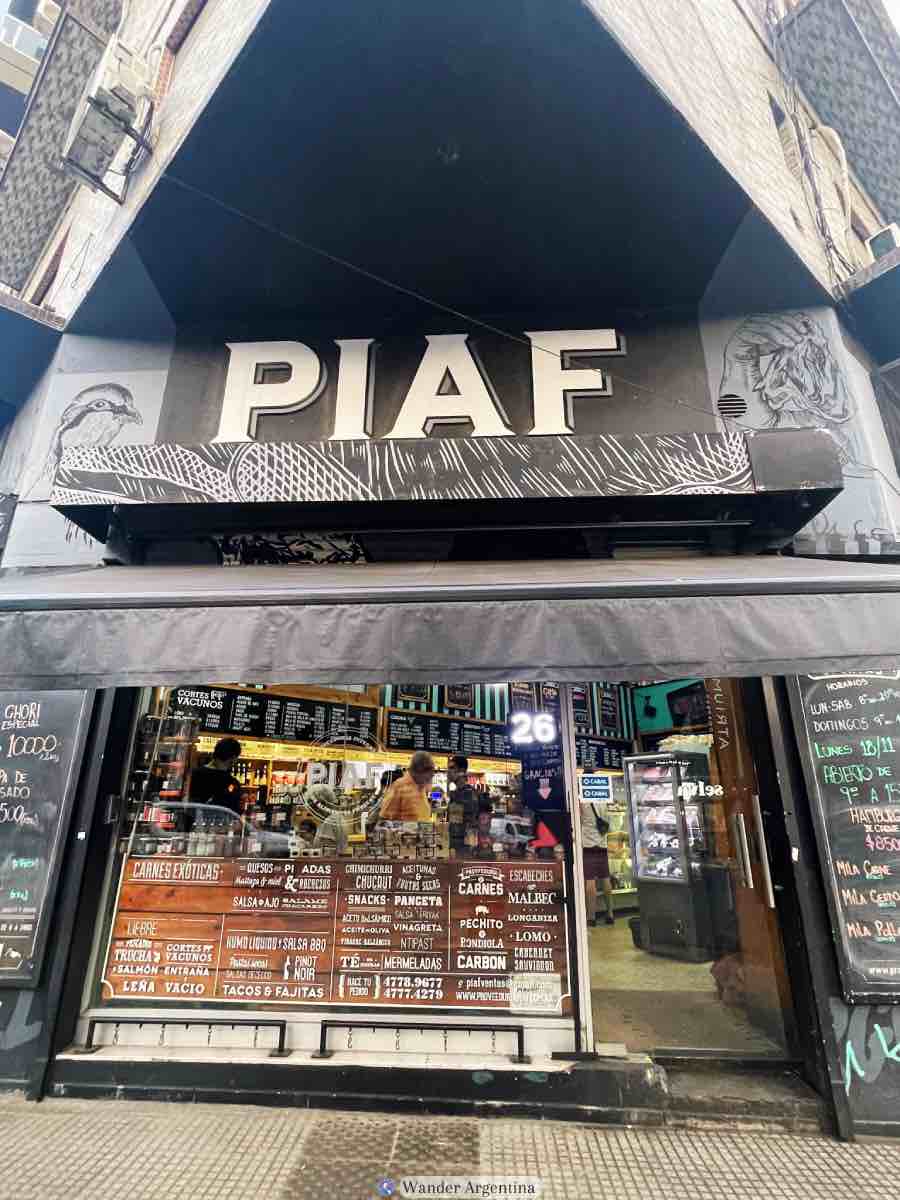
Caddy corner to the Dorrego flea market, Piaf is worth mentioning for its hard-to-find meats such as turkey and Patagonia lamb and a curated selection of specialty products from around the world.
Those in search of spices, and imported items such as maple syrup and hot sauce should head to the grocery stores in Barrio Chino, which are only a short Uber ride away.
Colegiales Cafes and Culinary Scene
Colegiales has a dearth of restaurants but so many cafes that any casual stroll into a caffeine crawl.
Charming coffeehouses and bistros offer everything from Brazilian specialty coffee to gourmet lunches.
Salvaje Bakery and Cuadra are pet-friendly, making it a great spot for both humans and their furry companions to socialize.
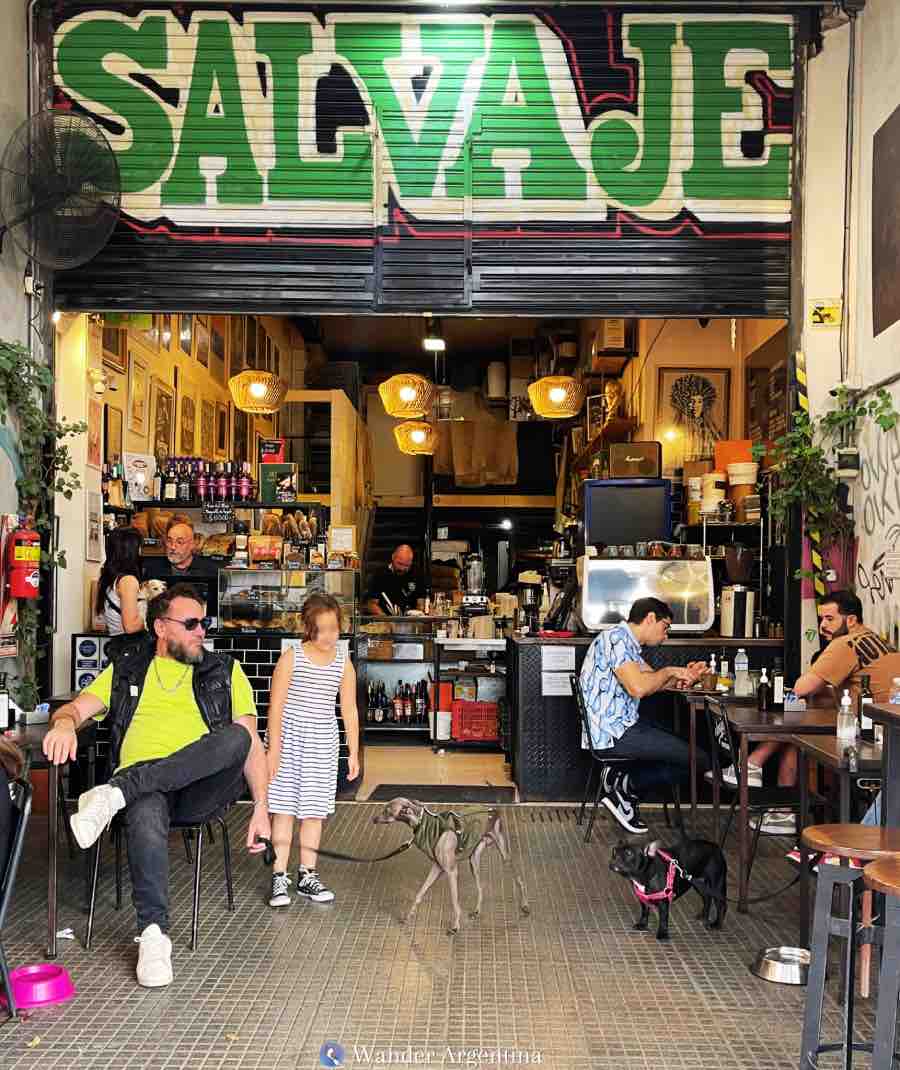
While nearby Palermo Hollywood is a far superior dinner destination, Colegiales’ numerous coffee shops are suitable for lunch or merienda serving up classic Argentine fare and, these days, fancy avocado toast on sourdough bread.
Tango lovers should check out Ocho Esquinas (Eight Corners — also referred to as ‘The German Bar’) which has German dishes and homemade pasta.
Opened in 1939, the abundant memorabilia that covers the walls proves this was once a regular haunt for performers during the golden age of tango.
Growing diversity in Colegiales’ limited culinary scene means you can also find a funky wine bar, upscale Japanese sushi restaurants, the world’s blandest Mexican food, and some of the city’s best (and only) Vietnamese in the city tucked into a cool canteen by the train tracks.
Pizza parlors in Colegiales serve up Pinsa Romana an ancient Roman-style pizza made with three fermented flours.
Several breweries here all offer quality in-house microbrews, although not as late into the night as in Palermo. (Hint for Lunfardo learners: ‘birra‘ means ‘beer’)
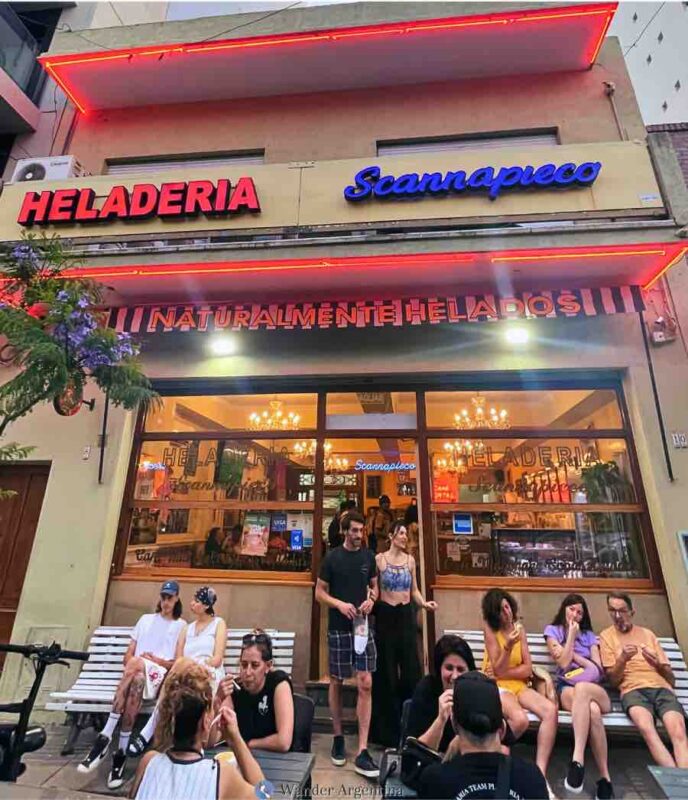
No visit to Colegiales is complete with a stop at Heladería Scannapieco.
Opened in 1938, the ice cream parlor is now under the management of the family’s fourth generation.
Favorites such as lemon pie, pistachio, dulce de leche and Dutch Chocolate provide a sweet ending to any Colegiales visit.
Colegiales Boundaries
Colegiales is squeezed between Belgrano to the north, Palermo to the east, Villa Ortúzar to the west and Chacarita to the south.
The neighborhood is situated between several major avenues, including De los Incas, Elcano, Virrey del Pino, Cabildo, Jorge Newbery, Crámer, Dorrego, Álvarez Thomas, and Forest.
The neighborhood shares heritage with Chacarita, now a separate neighborhood to the south known for its sprawling, spooky cemetery.
TL:DR Colegiales Neighborhood Round-up
Colegiales is a high-density, but tranquil Buenos Aires ‘barrio’ with a baked-in educational heritage, antique flea market, lovely parks and enough cafes to caffeinate an army of students.
